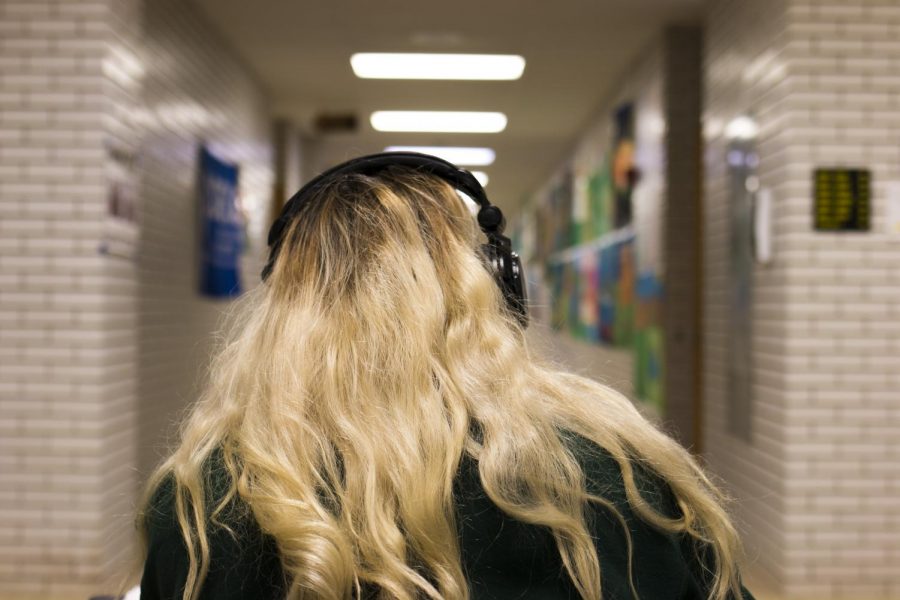Say Yes to Music
May 6, 2019
As I scrolled through the literal thousands of playlists available to me on Youtube, desperately searching for a reservoir of songs that matched my mood just right, a thought floated across my mind: When you’re sad, what do you do? Listen to music. When you’re happy, what to do? Listen to music. When you need motivation, what do you do? Listen to music.
You get the idea.
In an international study conducted by Heartbeats International, people reported music being harder to live without than sports, movies, and newspapers. Throughout different countries, cultures, and time periods, music is a constant — the metaphorical lifeblood of expression, creation, and celebration, if you will, pumping blood to every continent of the globe.
For years, the effect that music has on human beings has stumped scientists. Looking through a scientific lens, the fixation of music and the emotion it causes is nonsensical; music is not necessary for survival, so why did our ancestors care for it so much and how did we develop emotions as a response to it?
A breakthrough study conducted by Dr. Robert Zatorre and published in Nature Neuroscience has concluded that listening to music you love makes you happy in a very real way; Zatorre was able to conclude that dopamine, a neurotransmitter involved in pleasure and reward systems, is released when listening to music you love.
But the explanation for the brain’s response to music is still unsolved. As a Vox article written by Brian Resnick suggests, our connection to music might stem from our natural, psychological love for patterns; and music is essentially a pattern. As we listen to a song we love, we are anticipating melodies and rhythms and harmonies. Zatorre explains it by saying, “if I hear a chord progression — a one chord, a four chord, and a five chord — probably I know that the next chord is going to be another one chord.”
Just as dopamine is released during behavior essential to survival—like eating—this kind of predictive behavior is rewarded.
Zatorre concluded that, in this sense, people enjoy listening to familiar music much more than unfamiliar music or music with abnormal rhythms, like jazz.
Regardless of why humans developed this link to music, its existence is undeniable. In many ways, music is meant to tell a story; it is intended to invoke emotion that the listeners will hurry back to feel again.
Music can do many things for people, one of which is improve memory. In studies, music has been proven to increase the memory of patients with Alzheimers and dementia. In a study conducted by UCLA director of the Katherine and Benjamin Kagain Treatment Development Program, Dr. Joshua Grill, the patients were seen to have increased memory after listening to classical music. He noted that patients “may not be able to remember a list of words you gave them five or 10 minutes ago, they often can give you spectacular details of memories from their youth or young adulthood . . .music may tap into old memories — positive experiences from your youth associated with particular music — even better than just trying to remember things.”
Beyond Alzheimer patients, music has been proven to also help victims recover speech skills they lost in strokes or accidents. A well-known example is the case of Gabrielle Giffords. In 2011, the US Congresswoman suffered a gunshot to the head. The bullet went through her brain and she was left unable to produce speech or walk. Miraculously, jut seven weeks after the tragedy, Giffords could be found mouthing the words to iconic nursery rhyme, “Twinkle, Twinkle Little Star.” Soon after, she began to make out the melodies of other classics, like “American Pie,” to her family’s delight. This milestone accomplishment for the politician who was thought to never speak again owes to neurologic music therapy.
Shina Morrow, a former opera student and current Speech-Language Pathologist who worked with Giffords during her recovery, explains how the therapy works. “Neurologic music therapy works on both the physical and mental aspects of a patient’s recovery,” Morrow It helps with words and memory. The patients automatically join in with songs they know and love. And of course songs and emotions go hand-in-hand.”
When it comes to physical recovery, Morrow plays a simple chord progression and shifts her weight from foot to foot in a waltz style, and her patients learn to follow suite.
She makes a final point to emphasize that “loss of language and loss of cognition are not a loss of intellect or knowledge. Our goal is to retrieve that knowledge. The role of the individual patient is crucial. Their willpower and determination and motivation is incredibly important.”
Through the many mysteries music holds, there is no doubt that it is a powerful force; it has both a biological and psychological effect on us. It can incite fear or inspire happiness; it motivates and elevates.
As five-time Grammy winning artist Billy Joel once said, “I think music in itself is healing. It’s an explosive expression of humanity. It’s something we are all touched by. No matter what culture we’re from, everyone loves music.”












